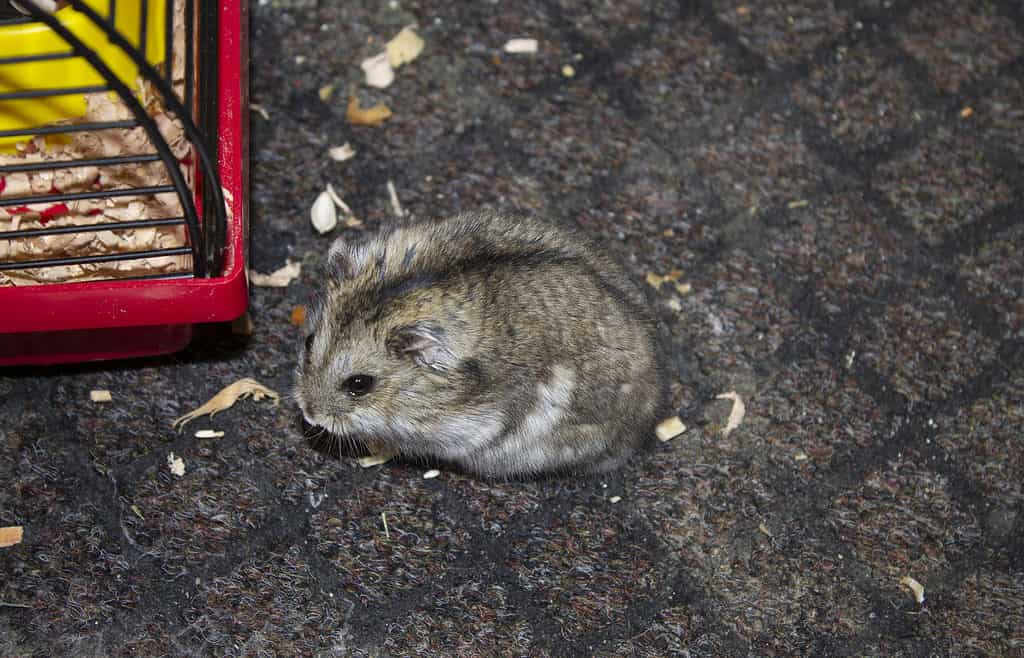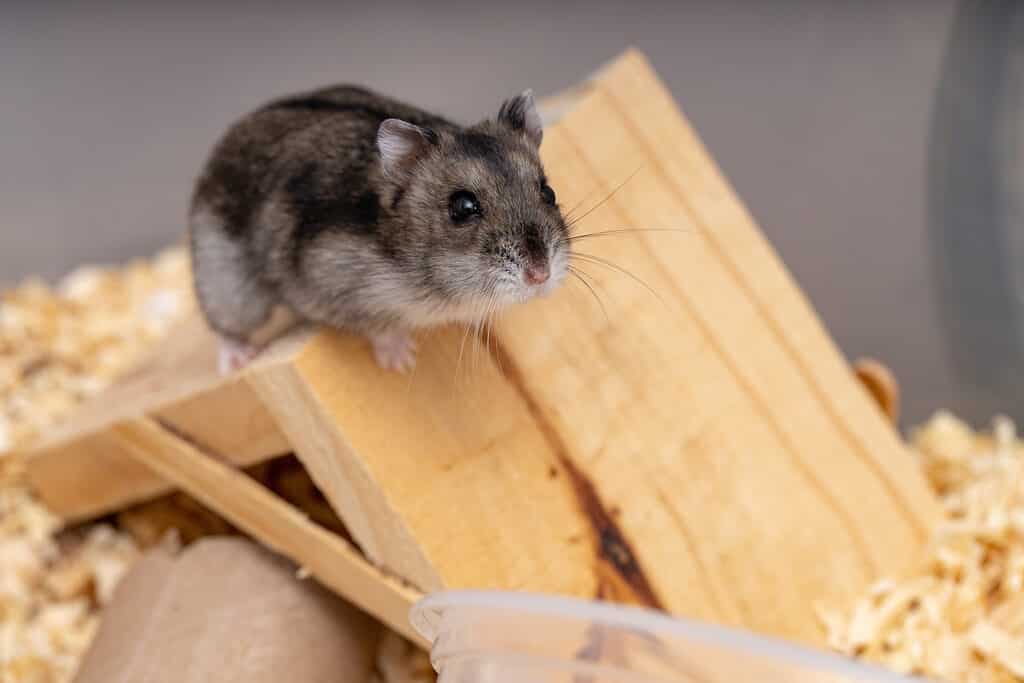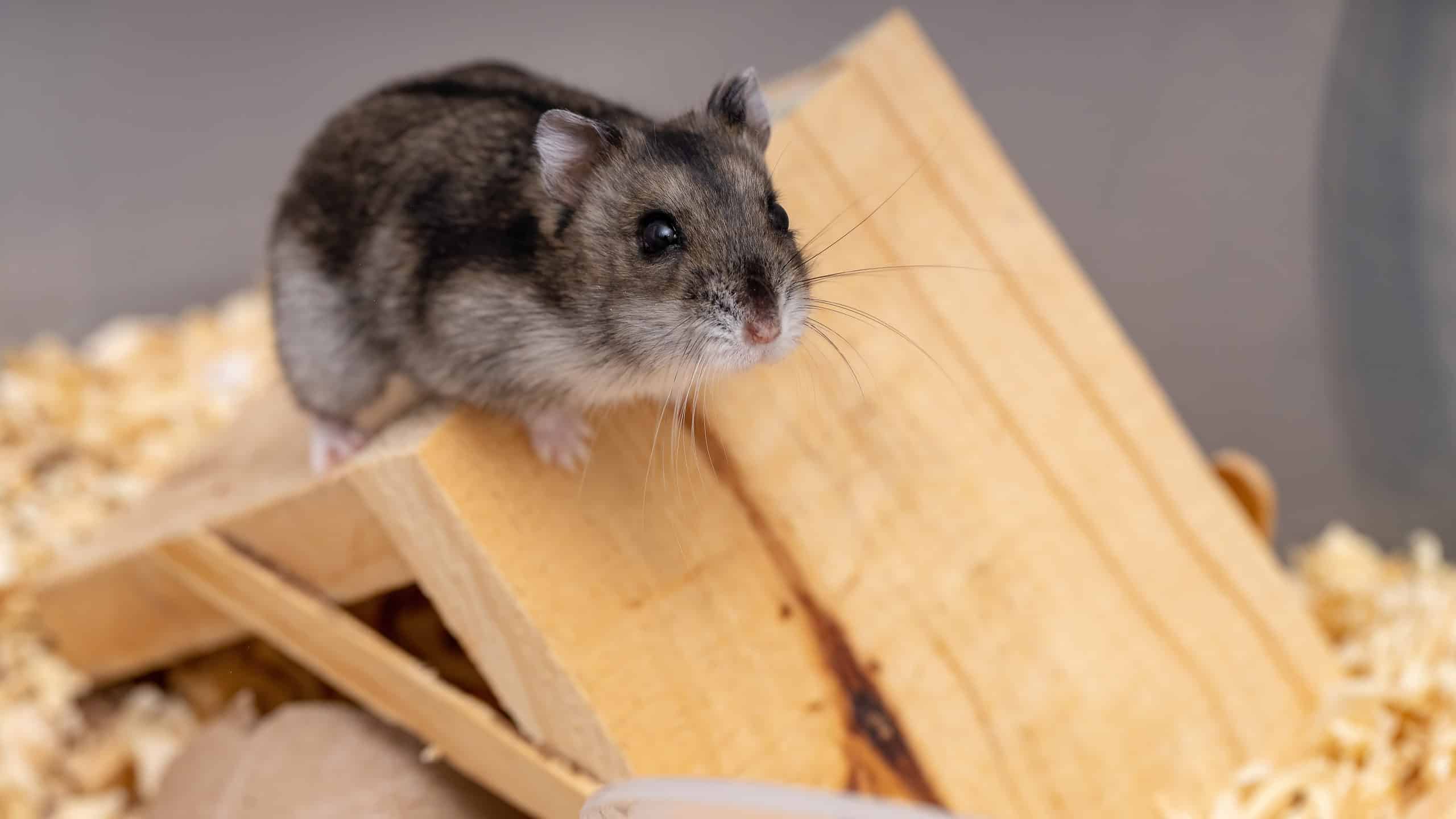Owning any hamster will cost you time and money, but certain species are more affordable than others. There are around five different species of domesticated hamster, along with a hybridized version. Out of those five species, around three species are considered more affordable.
Although the hamster itself is often cheaply priced, proper hamster care is not always affordable. It seems that the smaller hamster species are cheaper because they require smaller supplies, cages, and less food.
Let’s take a look below at the cheapest hamsters you can keep as pets.
1. Winter White Dwarf Hamsters

The winter white dwarf hamster is one of the three species in the
Phodopusgenus.
©Tsesar Anna/Shutterstock.com
| Scientific name: | Phodopus sungorus |
| Size: | 2 to 3 inches |
| Colors: | Grey, sapphire, pearl, and marbled |
| Lifespan: | 2 to 3 years |
| Minimum enclosure size: | 40 × 17.5 × 24 inches (700 square inches) |
Winter white dwarf hamsters are a small species that has been kept as pets since the late 1960s. They are found in various pet stores around the world and generally cost between $5 to $35. Winter whites have an average size of about 2 to 3 inches long, so they require smaller supplies than Syrian or Chinese hamsters.
Smaller hamster supplies like hideouts, food bowls, water bottles, and toys are often cheaper. Furthermore, winter white hamsters can live in slightly smaller cages than larger hamsters. However, the cage needs to be above 700 square inches of unbroken floor space. Smaller hamster cages are usually more affordable than larger ones, although the price still depends on the cage’s quality.
Thanks to their small size, you can also save money on substrate for winter white hamsters. As avid burrowers, all hamsters require a deep layer of substrate to burrow in. The ideal depth is around 6 to 8 inches deep for dwarf hamsters, and up to 12 inches for Syrian hamsters. A winter white hamster only requires a minimum of 6 inches of substrate for burrowing, allowing you to cut down on additional substrate costs.
2. Roborovski Hamsters

Roborovski hamsters are the smallest hamsters at only 1.5 inches long.
©iStock.com/Anyarnia
| Scientific name: | Phodopus roborovskii |
| Size: | 1.5 to 2 inches |
| Colors: | Agouti, husky, platinum, and pied. |
| Lifespan: | 2 to 3 years |
| Minimum enclosure size: | 40 × 17.5 × 24 inches (700 square inches) |
The Roborovski or robo hamster for short is the smallest species of dwarf hamster. These tiny pocket pets are usually no more than 2 inches long and can be found in different colors. Roborovski hamsters are considered slightly rarer than other dwarves or Syrian hamsters and cost around $8 to $40. Since Roborovski hamsters are so tiny, they require smaller cages and supplies. These hamsters require a minimum cage size of 700 square inches of floor space, which is much smaller than the 900 square inch minimum for Syrians.
Plus, Roborovski hamsters need small supplies and wheels which are cheaper. Large hamster wheels typically cost more, and Roborovski hamsters are more than happy to run on an 8-inch wheel.
Like the winter white dwarf hamster, Roborovski hamsters do not need as much substrate to burrow in as Syrians do. A 6-inch layer of substrate is usually sufficient for these rodents. Another factor that makes Roborovski hamsters affordable to own is that they produce small amounts of poop and urine. They take longer to soil the cage than larger hamsters and therefore smell less. This saves you from having to purchase more substrate and cleaning supplies regularly. Spot cleaning every few days helps to keep their cage tidy and virtually smell-free.
3. Campbell’s Dwarf Hamsters

The Campbell’s dwarf hamster is alternatively known as the Djungarian or
Siberian
hamster.
©Vinicius R. Souza/Shutterstock.com
| Scientific name: | Phodopus campbelli |
| Size: | 2 to 3 inches |
| Colors: | Blue, black, fawn, dove, lilac, opal, and grey. |
| Lifespan: | 2 to 3 years |
| Minimum enclosure size: | 40 × 17.5 × 24 inches (700 square inches) |
Campbell dwarf hamsters are often confused for winter white dwarves, although they are different species. However, Campbell and winter whites are the two species used to create hybrid dwarf hamsters. These hamsters are relatively cheaper to care for than Syrian hamsters because they require smaller supplies and cages. You can expect to pay around $5 to $35 for a Campbell dwarf hamster from a pet store or breeder.
Like the winter white and Roborovski hamster, Campbells are small with an average size of 2 inches long. Most small wheels, bowls, and hideouts are suitable for Campbell dwarf hamsters and are usually more affordable. You do not have to purchase large accessories or wheels for them, as an 8-to-10-inch wheel is good enough.
Aside from needing smaller supplies and less substrate, Campbell dwarf hamsters typically eat less food than Syrian hamsters. You probably won’t need to spend as much on hamster food every month as you would for larger hamsters. About one to two tablespoons of a balanced hamster food mix is appropriate once a day.
Conclusion
The dwarf hamster species in the Phodopus genus seem to be the cheapest pets to keep. Their smaller size means slightly smaller cages, supplies, substrate, and food portions. However, just because some hamsters are cheaper to keep than others, doesn’t make them affordable pets in general.
Hamsters need proper care to thrive, including access to veterinary care when necessary. Not everyone has the finances to care for a hamster and it is crucial to determine if you do before you get one.
Summary Of The 3 Cheapest Hamsters To Keep as Pets
| Rank | Hamster |
|---|---|
| 1 | Winter white dwarf hamster |
| 2 | Roborovski hamster |
| 3 | Campbell’s dwarf hamster |
Thank you for reading! Have some feedback for us? Contact the AZ Animals editorial team.








